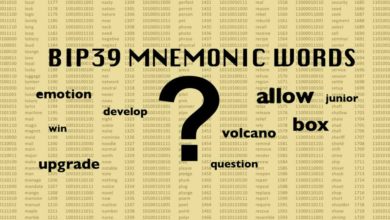Dark Gravity Wave – What is DGW? | Difficulty Retarget Algorithm
In most of our mining guides we’ve shared coins that has difficulty retarget algorithm as Dark Gravity Wave. People often ask what is Dark Gravity wave and how this difficulty retarget algorithm works. If you are following Coin Guides then you’d know that when we give introduction to a coin we’ll first share its technical specifications. Only then we’ll get into wallet tutorial or mining guide. While we’ve explained everything in and out about a coin we never explained any of its technical features; what it is or how it works. For beginners to understand Bitcoin, Blockchain and Cryptocurrency terms we opened this new section called knowledge base where we are only going to write about technical terms. This is the first post in knowledge base and it’s about Dark Gravity Wave.
What is Dark Gravity Wave (DGW)?
In Bitcoin and other Cryptocurrencies “Dark Gravity Wave” is an open source mining difficulty re-adjustment algorithm developed by Evan Duffield (creator of X11/Darkcoin/Dash). The first Crypto currency to implement this algorithm is Darkcoin DASH or Digital Cash. Later on; many Alt coins started to adopt this algorithm as it is known to adjust the difficulty faster and its non-linear.
Before DGW came KGW (Kimoto Gravity Wall), a most popular difficulty re-target algorithm that adjusts difficulty every block using information from the previous blocks. Dark Gravity Wave was inspired and is based on Kimoto Gravity Well (KGW). Also DGW is proven to reduce some theoretical disadvantages of KGW such as time-warp exploit. Also there are 2 other difficulty adjustment algorithm namely Nite’s Gravity Wave and Digishield. You’ll come across all these algorithms only in Proof-of-Work mineable coins and not on Proof-of-Stake coins.
Why DGW and How it works?
In Bitcoin the standard block difficulty readjustment is set to adjust only every 2016 blocks. The problem with this scheme is that it gave rise to multipool mining. Multipool mining is a process of jumping from one crypto to another mining the most profitable one at that current moment. Then the miners dump the mined coins to buy back Bitcoins. True, this actually happened back then when the price of Bitcoin Cash (BCH) arose .
Miners will only focus on economic incentives; as BCH became more profitable miners almost abandoned Bitcoin network to mine BCH. Once BCH adjust its difficulty miners will then jump back to mine Bitcoin. People actually thought its 51% attack but it’s actually nothing but a seesaw of hashing power being delivered between Bitcoin and Bitcoin Cash based on their profitability. This was a serious problem with Bitcoin and this is what gave birth to Dark Gravity Wave and other mining difficulty regulator
Benefits of Dark Gravity Wave
DGW uses multiple exponential moving averages and a simple moving average to achieve the smoother difficulty re-target mechanism. Coins that have Dark Gravity Wave as their difficult algorithm are immune to issues like multipools as it retargets difficulty every single block. Not just that; with DGW the chain becomes more secure and block times are much more consistent; despite large fluctuations in mining power. Apart from controlled difficulty some other benefits of Dark Gravity Wave are security, faster transaction, more miners and reliable chain. Hope this information helps!




